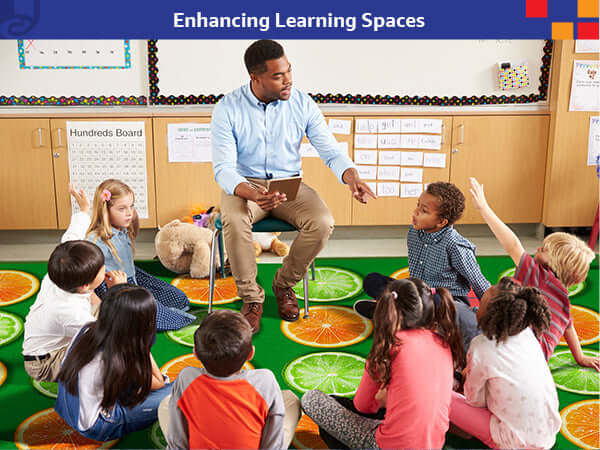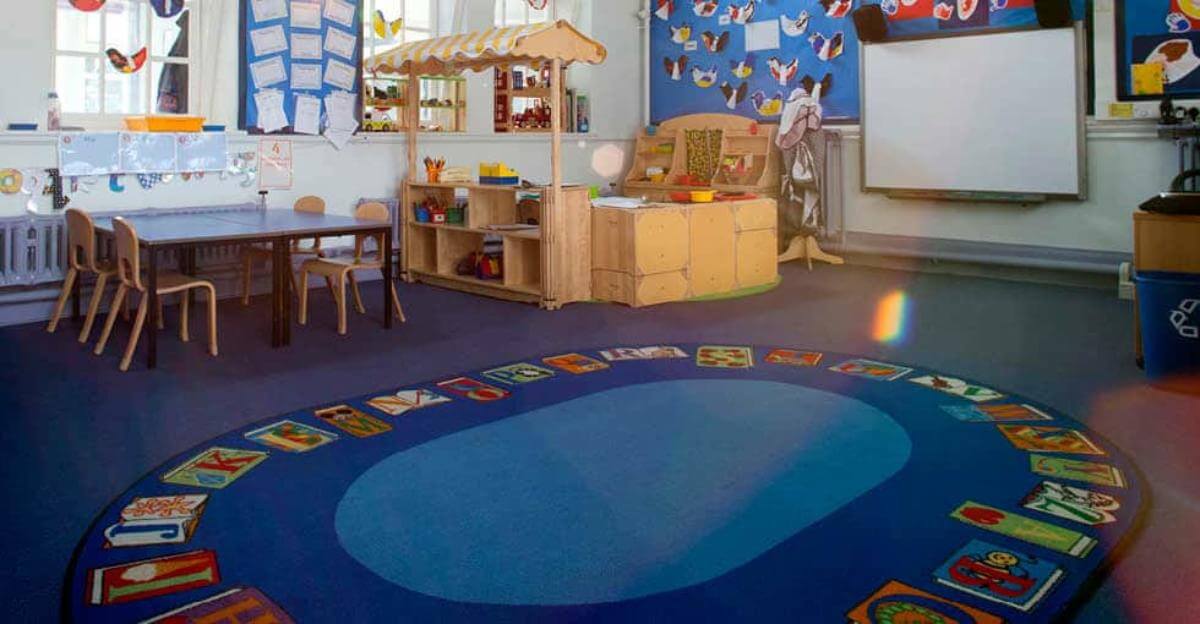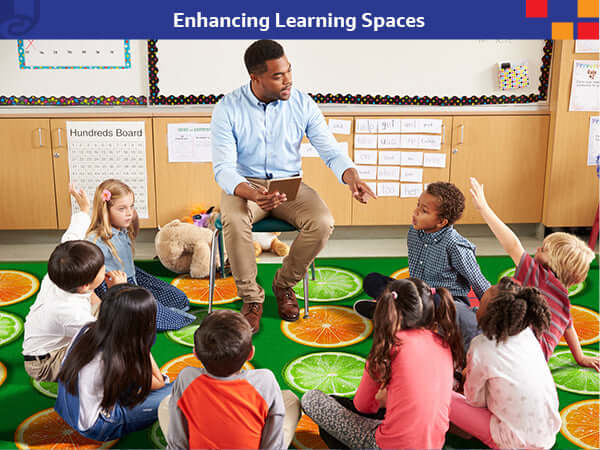G'day, classroom champions! Ever wondered what's really happening in that magical circle of chatter when your little learners gather on the classroom rug? As it turns out, those colorful classroom rugs aren't just comfy spots for bottoms—they're bustling hubs of social development, imagination, and some of the most ripper conversations you'll ever eavesdrop on!
The Secret Society of Rug Time Chats
When Ms. Taylor asks her Year 1 students to "find a spot on the rug," she's actually initiating them into what Melbourne educator Sam Phillips calls "the most authentic social laboratory in the classroom."
"I started recording snippets of what my students actually discuss during their informal rug time," shares Brisbane teacher Ellie Watson. "Beyond the obvious curriculum content, they're negotiating complex social hierarchies, debating the existence of unicorns, and solving world problems—all while sitting criss-cross applesauce on our alphabet rug!"
What They're REALLY Talking About
1. The Great Snack Exchange
Food diplomacy starts young! Watch closely and you'll notice elaborate trading systems developing right on your circle time rug.
"Jayden just negotiated his apple slices for Sophia's cheese stick using a complex bartering system that would impress stock market traders," laughs Sydney kindergarten teacher Mark Johnson. "These little tackers are learning economics before they can even tie their shoes!"
2. Weekend Adventure Recaps (With Creative Embellishments)
Monday morning rug time often transforms into storytelling competitions that would put bush yarns to shame.
"According to Liam, he caught a shark 'THIS BIG' while fishing with his dad," reports Adelaide educator Penny Zhang. "Never mind that they live three hours inland and were actually catching yabbies in a creek. The ocean-themed rug we sit on seems to inspire these fantastic aquatic tales!"
3. Philosophical Debates That Would Impress Socrates
Don't underestimate the depth of rug time discussions. These mini-philosophers tackle the big questions of life with surprising insight.
Perth teacher Josh Kimberley recounts, "Last week on our world map rug, Aisha asked why the sky is blue, which led to Mason wondering if dogs see the same blue we do, which somehow ended with the entire class debating whether colors exist when nobody's looking at them. Fair dinkum, I needed a coffee after that one!"
4. The Latest Playground Politics
The classroom rug often serves as diplomatic headquarters where alliances are formed, conflicts resolved, and the critical matter of who gets to be the T-Rex during lunch break is settled.
"Our community circle rug has seen more conflict resolution than the United Nations," jokes Queensland teacher Dan Murphy. "Yesterday, three separate friendship treaties were negotiated, all while we were supposedly learning about the water cycle!"
Harnessing the Magic: Turning Rug Patterns into Learning Tools
Smart teachers know that the patterns on classroom rugs aren't just decorative—they're educational gold! Here's how to make the most of your rug's design features:
Map Rugs: Geography Comes Alive
With a detailed map rug, every morning meeting becomes a global adventure.
"We start each day with 'Where in the world are we going?'" explains Tasmania-based teacher Olivia Chen. "Students take turns closing their eyes and placing a finger somewhere on our map rug. Then we learn three facts about that location. The kids are absolute geography gurus now—all from this simple rug game!"
Try this: Have students hop from continent to continent while naming animals that live there. Instant active learning!
Number Rugs: Mathematical Playground
A number grid rug transforms abstract math concepts into physical experiences.
"We play 'Math Twister' on our number rug," shares Canberra teacher Tom Williams. "I'll call out 'right hand on an even number' or 'left foot on a multiple of 3' and suddenly math becomes the most exciting part of their day. We've had kids voluntarily practicing multiplication on the weekend—their parents think I'm some kind of wizard!"
Try this: For younger students, call out simple addition problems and have them jump to the answer. For older kids, use the grid for coordinate geometry games.
Alphabet Rugs: Literacy in Motion
The humble alphabet rug might be the most versatile teaching tool in your classroom.
Northern Territory teacher Mel Cooper explains her approach: "Our phonics lessons happen right on the rug. When we learn a new sound, students race to find all the letters that can make that sound. For 'sh', they might stand on S and H together, then find pictures around the room that start with that sound."
Try this: Play "Spelling Hopscotch" where students jump from letter to letter to spell sight words.
Shape and Color Rugs: Pattern Recognition Powerhouses
Geometric rugs offer endless opportunities for pattern recognition and sorting games.
"We use our shape rug for everything from basic identification with the littlies to complex symmetry lessons with older students," says Gold Coast educator Jasmine Patel. "One of our favorite games is 'Shape Detective' where I describe a shape's properties and students race to stand on the matching shape."
Try this: Create pattern sequences using the shapes or colors on your rug, then challenge students to continue the pattern.
Beyond Academics: The Social-Emotional Learning Happening on Your Rug
While the academic benefits of purposeful rug activities are clear, the social-emotional growth might be even more valuable.
Building Community Through Circle Games
"Our morning meeting rug is where we build our classroom family," shares Newcastle teacher Aaron Simmons. "Simple activities like our daily 'Rug Compliment Circle' have transformed how students treat each other. Each day, one student sits in the center of our friendship rug while classmates take turns sharing compliments."
Try this: Start a "Rug Gratitude Practice" where students share one thing they're thankful for before beginning the day's lessons.
Managing Big Emotions in a Safe Space
The classroom rug often becomes an emotional regulation zone where kids learn to express and manage feelings.
"We have a special spot on our calming sensory rug that we call the 'Feelings Corner,'" explains early childhood specialist Mia Thompson. "Students know they can go there when emotions feel too big, and we practice deep breathing techniques together as a class."
Try this: Create emotion cards with different feelings. Students can act out these emotions while others guess, teaching emotional literacy through play.
The Silly Side: Games That Make Rug Time the Best Time
Let's face it—the most memorable learning happens when kids are having a blast! Here are some ripper rug games that combine fun with serious skill-building:
The Silent Game (With a Twist!)
This classroom classic gets an upgrade on a colorful activity rug.
"We play 'Color Freeze' where students dance around the rug until I call out a color," explains Sydney teacher Emma Johnson. "They must freeze on that color immediately. The twist? They have to freeze in a pose that starts with the same letter as the color. B for blue might mean they balance on one foot!"
Rug Island Adventures
Transform your classroom rug into an island oasis for imaginative play with educational benefits.
"Friday afternoons are 'Rug Island' time," shares Brisbane educator Patrick O'Leary. "Our tropical island rug becomes the setting for collaborative storytelling adventures. I'll start with a problem—like a coconut shortage or a friendly whale who's lost—and students work together to solve it."
Movement Pathways
Use the patterns on your rug to create movement challenges that get the wiggles out while reinforcing directionality.
"Our pathway rug has these brilliant curved and straight lines," notes Adelaide teacher Sarah Wong. "We practice moving like different animals along these paths—slithering like snakes along curved lines or hopping like kangaroos along straight ones. The kids are learning about animal movements, directional vocabulary, and burning off energy all at once!"
Overheard on the Rug: Actual Kid Conversations That'll Make Your Day
Sometimes the best teaching moments come from simply listening to what emerges naturally during rug time. Here are some gold nuggets overheard by real Aussie teachers:
- "My tooth fairy left me five dollars because my tooth had extra blood on it. That's like tooth fairy overtime pay." —Zoe, age 6
- "If you mix a unicorn with a shark, you'd get a swimming horse with a sword on its head. That's just science." —Liam, age 5
- "My nan says when you plant a seed, you have to sing to it so it knows which way is up. Otherwise, your carrots might grow upside down!" —Harper, age 4
- "I think teachers live at school. They have a special bedroom behind the whiteboard. That's why they're never late." —Ethan, age 7
Creating Your Dream Rug Space: Tips from the Pros
Ready to maximize the magical potential of your classroom rug area? Consider these expert tips:
- Location matters: Position your rug away from high-traffic areas to minimize disruptions during group time.
- Size for success: Ensure your classroom rug is large enough for all students to sit comfortably—overcrowding leads to conflicts.
- Define boundaries: Use carpet spots or tape markers to help students understand personal space.
- Change it up: Consider seasonal or thematic rug swaps to refresh the learning environment.
- Think beyond sitting: Look for rugs with designs that encourage movement and interaction.
The Last Word: Why Rug Time Matters More Than Ever
In an era of increasing screen time and structured activities, the simple joy of gathering on a classroom rug offers something irreplaceable—authentic human connection.
"Some of my students don't have many opportunities for cross-legged, face-to-face interactions at home," reflects veteran teacher David Morrison. "Our rug time is where they learn to read facial expressions, take conversational turns, and build the social skills they'll need for life."
So next time you call your students to the rug, know that you're not just transitioning between activities—you're creating a tiny society where friendships bloom, ideas collide, and children learn who they are in relation to others. And honestly? Those little conversations about wobbly teeth and backyard adventures might be the most important curriculum of all.
After all, as any classroom teacher will tell you: some of the best learning happens bottom-down, circle-up, in the magical space we call rug time!








Leave a comment
This site is protected by hCaptcha and the hCaptcha Privacy Policy and Terms of Service apply.